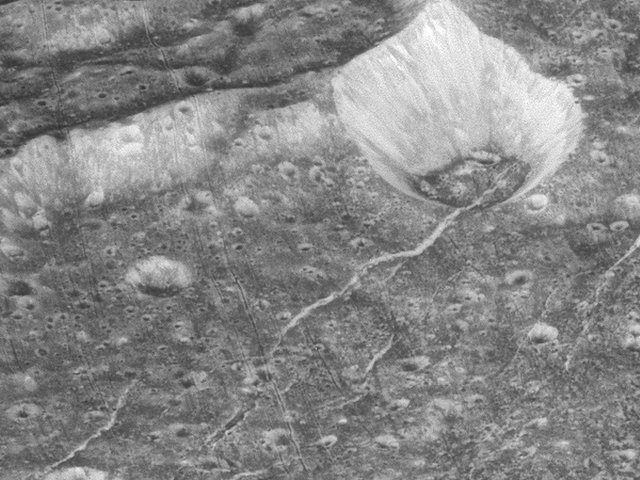Takes quite a different collision to produce one of these.
And a unique set of underlying geology, this one is imposed on the wall of a much more ancient crater.

By NASA / JPL / Space Science Institute - http://www.ciclops.org/view.php?id=1582, Public Domain, Link
Congratulations @gavvet! You have completed the following achievement on the Steem blockchain and have been rewarded with new badge(s) :
You can view your badges on your Steem Board and compare to others on the Steem Ranking
If you no longer want to receive notifications, reply to this comment with the word
STOPDo not miss the last post from @steemitboard:
Vote for @Steemitboard as a witness to get one more award and increased upvotes!
Downvoting a post can decrease pending rewards and make it less visible. Common reasons:
Submit
Nice find. That got me curious about what is known about lunar strata.
Downvoting a post can decrease pending rewards and make it less visible. Common reasons:
Submit
Our moon was molten internally in the past and was very active volcanically. The dark patches that make up the Man in the moon are actually massive solidified flood volcanics not too dissimilar from our very own flood basalts here on earth.
As far as the surface strata go; check out this post:
https://steemit.com/science/@gavvet/black-rock-rain
Downvoting a post can decrease pending rewards and make it less visible. Common reasons:
Submit
thank you for sharing this interest photo
Downvoting a post can decrease pending rewards and make it less visible. Common reasons:
Submit
Why are craters round? Do impactors only strike at right angles.
Posted using Partiko Android
Downvoting a post can decrease pending rewards and make it less visible. Common reasons:
Submit